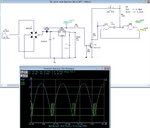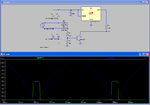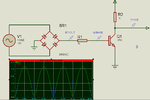igeorge
Member level 5
Thank you Paul.
I did some experiments on Proteus - I hate this software but is the only i have - and here are the results
On 2N2222 is a nice clean signal
On XOR version, i have some spikes on the begining and end of the pulse.
Maybe is Proteus
Can anybody test it with other software ?
Thank you
I did some experiments on Proteus - I hate this software but is the only i have - and here are the results
On 2N2222 is a nice clean signal
On XOR version, i have some spikes on the begining and end of the pulse.
Maybe is Proteus
Can anybody test it with other software ?
Thank you






